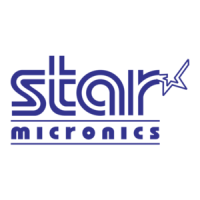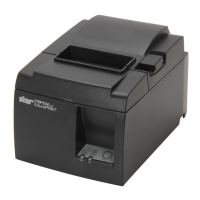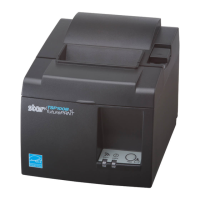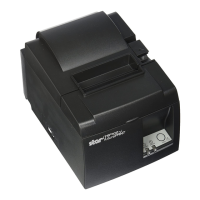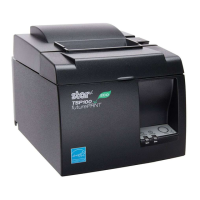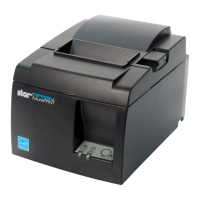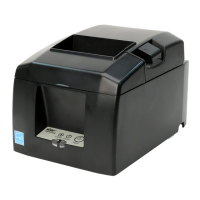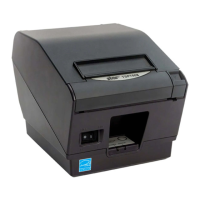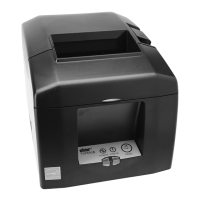Do you have a question about the Star Micronics TSP100 and is the answer not in the manual?
Details the process of unpacking the printer and checking included accessories for U and PU models.
Identifies and labels the components of the Star TSP100 U Model printer.
Identifies and labels the components of the Star TSP100 PU Model printer.
Provides guidelines for selecting an optimal location for printer installation.
Instructions for connecting USB or PoweredUSB cables to the printer for U and PU models.
Explains how to connect peripheral devices, such as cash drawers, using a modular plug.
Step-by-step guide on how to properly load thermal roll paper into the printer.
Guides for connecting the printer's USB or PoweredUSB interface cable to a host PC.
Procedure for installing the printer driver and utility software from the supplied CD-ROM.
Instructions for connecting the power cord to the printer and AC outlet for U and PU models.
Details on locating and operating the power switch to turn the printer on.
Instructions for attaching the holder plate for wall mounting the printer.
Guide to attaching the rubber feet for vertical printer positioning.
Optional installation procedure for the switch cover to prevent accidental power switch operation.
Defines the technical specifications for thermal roll paper compatible with the printer.
Lists recommended manufacturers and product names for thermal paper.
Overview of the printer's control panel, including power and error lamps, and feed button.
Details on printer error conditions, their descriptions, and recovery procedures.
Instructions for performing a self-test print to check printer status and settings.
Tips and methods to prevent paper jams during printer operation.
Step-by-step guide to clearing a paper jam from the printer.
Procedure to release the auto cutter if it locks up or fails to cut paper.
Instructions for cleaning the thermal print head using isopropyl alcohol.
Guidance on cleaning the paper holder and transport section to remove paper dust.
Technical specifications and circuit diagram for connecting peripheral units.
Provides overall specifications including printing method, speed, dimensions, and weight.
Details on the auto cutter's cutting frequency and paper thickness compatibility.
Information on USB interface specifications and connector pinouts for U and PU models.
Presents input voltage and current consumption details for the printer.
Specifies the operating and storage temperature and humidity ranges for the printer.
Details on the mechanical life, head life, auto cutter life, and MCBF of the printer.
Instructions for configuring DIP switch settings, primarily for the PU model.
| Print Method | Direct Thermal |
|---|---|
| Resolution | 203 dpi |
| Power Supply | Internal |
| Print Speed | 250 mm/sec |
| Paper Width | 80 mm |
| Interface | USB |
| Cutter | Partial Cut |
| Dimensions | 142 mm x 204 mm x 132 mm |
| Paper Thickness | 0.085 mm |
